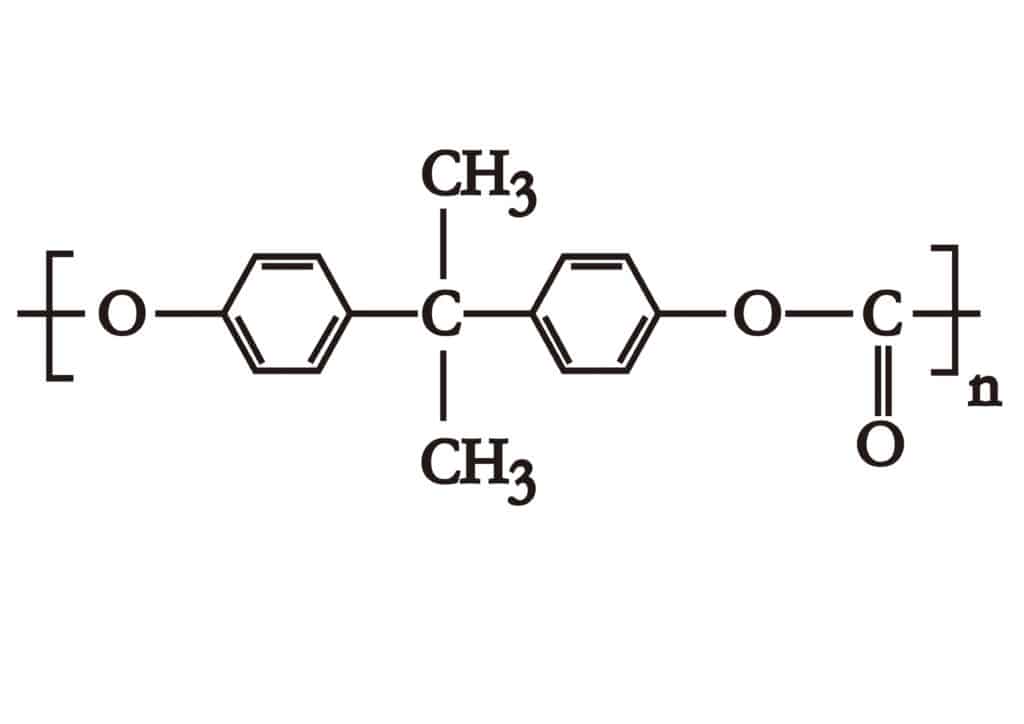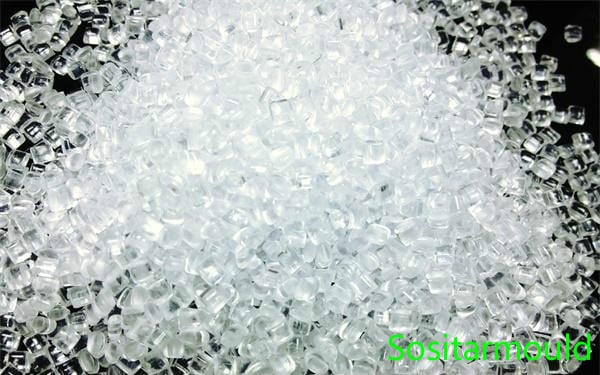Polycarbonate (Abbr. PC) is an engineering thermoplastic with an excellent performance, boasting outstanding resistance to impact and creep, as well as great dimensional stability, heat resistance, low water absorption, non-toxicity and excellent dielectric properties. Among the top 5 engineering plastics, it is the only one with great transparency, while also being the fastest growing general engineering plastic in recent years. Currently, it is widely used in the automotive, electronics / electrical appliances, construction, office equipment, packaging, sports, healthcare and other fields. With the continuous deepening of research in modification, its application is rapidly expanding into such high-tech fields as aerospace, computer and optical disc.
Components of Polycarbonate

Polycarbonate is a tough thermoplastic resin, of which the name originates from its internal CO3 group. It is able to be synthesized from bisphenol A and carbon oxychloride (COCl2). At present, the most commonly used method is melt transesterification (bisphenol A and diphenyl carbonate are synthesized via transesterification and polycondensation reaction). Reaction principle of bisphenol A and diphenyl carbonate:
Polycarbonate injection Molding Parameters

Processing of Plastic
PC has a high water absorption rate, so it has to be preheated and dried before processing. It is recommended that the pure PC is dried at 120℃, and the modified one is usually dried at 110℃ for more than 4 hours, but less than 10. Usually, empty shot is performed to see whether it is sufficiently dried.
The proportion of recycled PC can reach up to 20%. Under some circumstances, 100% recycled material is allowed, with the actual proportion depending on product quality requirements. The recycled material cannot be concurrently mixed with different masterbatches, otherwise the properties of the final product will be seriously compromised.
Selection of Plastic Injection Molding Machine
Nowadays, due to the high cost and some other reasons, PC products adopt more modified materials, especially electrical products, which also require increased resistance to fire. When molding products with the flame retardant alloy of PC and other plastics, the plasticizing system of the plastic injection molding machine is required to have great mixing and corrosion resistant performance, which is difficult for the conventional screw to achieve. Therefore, during the purchase process, this has to be clarified in advance. We offer a range of special PC screws for our clients to choose from.
Mold & Gate Design
The commonly used mold temperature for PC is 80-100℃, and 100-130℃ for glass fiber reinforced PC. The pinpoint gate is usually used for small-sized products, and gate depth should be more than 70% of the thickest part. Other gate types include ring gate and rectangle gate.
The larger the gate, the better, so as to minimize defects caused by excessive plastic shearing. The depth of vent holes should be less than 0.03-0.06mm, the runner should be designed as short and round as possible, and the draft angle usually stands at around 30′-1°.
Melt Temperature
Empty shot can be performed to determine the processing temperature. Usually, the PC processing temperature is 270-320°C, and that of some modified or low molecular weight PCs is 230-270°C.
Injection Speed
Relatively fast injection molding is usually adopted, such as parts for electrical switches. The injection molding usually shows a slow to high-speed pattern.
Backpressure
The backpressure of about 10bar is recommended, which can be appropriately
reduced when there are no jetting marks or color mixing.
Residence Time
If the residence time at a high temperature is too long, the material will be degraded, with CO2 released and color turning into yellow. Use PS, instead of LDPE, POM, ABS or PA to clean the barrel.

Application of Polycarbonate Alloys
1. PC/ABS alloys: the PC and ABS blend integrates the excellent properties of both the PA and the ABS, improving the heat resistance, impact resistance and tensile strength of ABS, lowering the cost of PC and melt viscosity, improving processability, and reducing product internal stress and the sensitivity of impact strength to product thickness. At present, the PC/ABS alloys are developing rapidly, with a global output of about 800,000 tons/year. Various companies in the world are successively developing and launching new varieties of PC/ABS alloys, such as flame retardant, glass fiber reinforced, electroplating, and ultraviolet resistant PC/ABS alloys. It is widely used in the automotive industry, as well as the computer, copier, electronic and electrical component industries.
2. PC/PBT alloys: PBT boasts excellent mechanical properties, great resistance to chemical corrosion and easy injection molding. The alloys made by blending PBT and PC are able to improve the fluidity, processability and chemical resistance of PC. Since PBT is a crystalline polymer, phase separation is easy to occur when blended with PC, with unsatisfactory interfacial adhesion, so its impact toughness is not ideal. Usually a certain amount of elastomer is added to improve the impact strength of the blend. For example, the zinc salt of the thermoplastic elastomer ethylene / methacrylate copolymer has a compatibilizing and toughening effect on the PC/PBT blend.
3. PC/PET alloys: PET boasts great mechanical properties and chemical resistance, so the PC/PET alloys integrate both the rigidity and heat resistance of PC, and the solvent resistance of PET. Also, the addition of PET is able to improve the fluidity of PC. In the PC/PET blends, the addition of elastomers such as PBA is able to improve the toughness and impact strength of the alloys.
